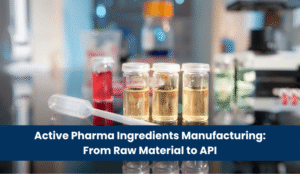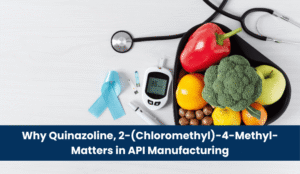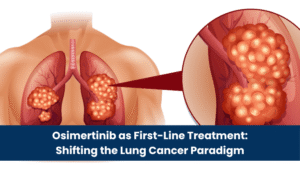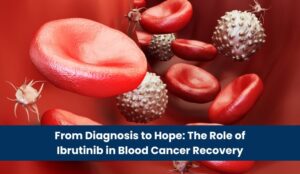Cancer. It is a term that has tremendous weight and has affected thousands upon thousands of people, inspiring an unending desire to improve solutions. We live in a world where oncology research is complex, and one family of substances is evoking considerable excitement with the prospect of redefining treatment: Quinazolines. This is not another chemical name that will be lost in the textbook, but it is a hope in the making of better, more intelligent, and pure armed weapons against cancer. What’s up with Quinazoline taking centre stage, and what can we say about it going forward?
What Is Quinazoline?
Think of quinazoline as a unique molecular scaffold – a fundamental building block. Picture a double-ringed structure, kind of like two interconnected hexagons, but with specific nitrogen atoms strategically placed. This seemingly simple arrangement is incredibly versatile. Chemists can attach various chemical groups to different points on this scaffold, creating a vast library of unique molecules called quinazoline derivatives. It’s this ability to modify the core structure that makes quinazoline so valuable. By adjusting the attached groups, scientists can fine-tune the molecule’s behaviour, particularly its interaction with specific targets within cancer cells. It’s like crafting a highly specific key for a complex lock.
Why Quinazoline Matters in Cancer Research
So, why all the fuss about this particular scaffold? The answer lies in its remarkable biological activity. Many quinazoline derivatives have shown a powerful ability to interfere with crucial processes that cancer cells rely on to survive, grow, and spread uncontrollably. Unlike older chemotherapy drugs that often act like indiscriminate bombs, affecting healthy and cancerous cells alike, the goal with quinazoline anticancer drugs is precision. Researchers are designing these derivatives to target specific molecular drivers unique to cancer cells—the very engines of their growth. This shift toward targeted therapy represents a major leap forward, aiming for treatments that are more effective and have fewer debilitating side effects. Isn’t that what we all hope for?
Quinazoline Derivatives in Targeted Cancer Therapy
The magic truly unfolds when we look at specific quinazoline derivatives. By modifying the core structure, scientists create compounds that act as highly specific inhibitors of these enzymes. For instance, certain derivatives are designed to block Epidermal Growth Factor Receptors (EGFRs), which are often hyperactive in cancers such as those of the lung, colon, and head and neck. Others might target kinases involved in blood vessel formation (angiogenesis), starving tumours of their nutrient supply. One example of such a modified compound is quinazoline-2-chloromethyl-4-methyl, which highlights how specific chemical alterations are made to enhance potency or selectivity against particular cancer pathways. These aren’t random shots in the dark; they are meticulously engineered molecular tools.
Mechanism of Action: How Quinazoline Compounds Fight Cancer
Understanding how these drugs work is key. Most quinazoline anticancer drugs function primarily as tyrosine kinase inhibitors (TKIs). Kinases are like cellular switches – enzymes that transfer phosphate groups to other molecules, turning various signals “on” inside the cell. In cancer, specific kinases are often stuck in the “on” position, constantly telling the cell to grow and divide. Quinazoline derivatives act like molecular plugs. They fit snugly into the ATP-binding pocket of these rogue kinases. ATP is the fuel that kinases need to work. By blocking this pocket, the quinazoline compound prevents the kinase from using ATP, effectively switching off the abnormal growth signal. Here’s a simplified look:
| Mechanism Component | Role in Cancer | How Quinazoline Intervenes |
| Tyrosine Kinase (e.g., EGFR, VEGFR) | Hyperactive, sends constant “grow & divide” signals | Quinazoline derivative binds to the kinase’s active site |
| ATP (Energy Molecule) | Fuels the kinase’s activity | Blocks ATP from binding, starving the kinase of energy |
| Signaling Pathway | Pathway stuck “ON”, driving uncontrolled cell proliferation | Interrupts the signal transmission, halting cancer progression |
This targeted interference halts the cascade of signals that drive cancer cell proliferation and survival. It’s a far cry from the scattershot approach of traditional chemo.
Benefits of Quinazoline-Based Cancer Therapies
The potential advantages offered by quinazoline anticancer drugs are substantial:
- Precision Targeting: They aim directly at cancer-specific molecules, sparing healthy cells more effectively than conventional chemo. This translates to a reduced likelihood of side effects, such as nausea, hair loss, and bone marrow suppression.
- Improved Efficacy: For cancers driven by specific, targetable mutations (such as certain EGFR mutations in lung cancer), these drugs can be significantly more effective than older treatments.
- Oral Administration: Many quinazoline derivatives have been developed as oral tablets or capsules, offering patients greater convenience and the ability to manage the treatment outside a hospital setting. This significantly improves the quality of life during therapy.
- Potential for Combination: Their targeted nature makes them excellent candidates for combination with other therapies, like immunotherapy or other targeted agents, potentially overcoming resistance and improving long-term outcomes.
The development of such sophisticated therapies relies heavily on consistent, high-quality starting materials. This is where expertise in producing complex active pharmaceutical ingredients (APIs) becomes critical. Reputable active pharmaceutical ingredient companies understand that the purity and stability of the api raw material influence the safety and effectiveness of the final drug product reaching patients. Trusted pharmaceutical ingredient manufacturers, such as Bulat Pharmaceutical, play a crucial part in this supply chain, ensuring researchers and formulators have access to the reliable building blocks needed for innovation. The journey from a potent molecule, such as a quinazoline derivative, to a life-saving medicine hinges on excellence at every stage, especially in the quality of the active pharmaceutical ingredients.
Challenges and Limitations of Quinazoline Drugs
Despite the promise, the path isn’t without hurdles:
- Resistance: Cancer cells are notoriously adaptable. Over time, they can develop mutations that prevent the quinazoline drug from binding effectively, or they can activate alternative signalling pathways, rendering the drug less effective. This remains a significant challenge, requiring ongoing research into next-generation inhibitors and combination therapies.
- Specificity & Off-Target Effects: While designed for precision, no drug is perfectly specific. Some quinazoline derivatives may inhibit similar kinases in healthy tissues, potentially leading to side effects such as skin rashes or diarrhoea. Finding the perfect balance of potency and selectivity is complex.
- Identifying the Right Patients: These drugs are typically most effective for cancers with specific genetic alterations. Robust diagnostic testing is essential to identify patients who will truly benefit, ensuring the right drug reaches the right person.
- Complex Synthesis: Manufacturing complex quinazoline derivatives, such as quinazoline-2-chloromethyl-4-methyl, to the stringent purity standards required for pharmaceuticals is a technically demanding process. It requires advanced facilities and deep expertise from active pharmaceutical ingredient manufacturers. Scaling up production while maintaining impeccable quality control presents a significant challenge that specialised pharmaceutical ingredients manufacturers continuously strive to overcome.
Partnering for Progress: Bulat Pharmaceutical & the Quinazoline Journey
The exploration of quinazoline and its derivatives marks a pivotal chapter in the evolution of cancer treatment. Moving beyond the blunt instruments of the past, these compounds embody the shift towards intelligent, targeted therapies designed to disrupt cancer at its molecular roots. While challenges like resistance and the need for precise patient selection remain active areas of intense research, the progress fueled by quinazoline anticancer drugs is undeniable. They offer tangible hope for more effective treatments with improved tolerability, fundamentally changing patient experiences and outcomes.
The development of such sophisticated therapies relies on a robust ecosystem. From fundamental research identifying promising scaffolds, such as quinazoline, to the intricate work of active pharmaceutical ingredient companies synthesising high-purity API raw materials, and finally to clinicians delivering these treatments, each step is crucial. As leaders in producing critical active pharma ingredients, companies like Bulat Pharmaceutical are committed partners in this vital journey, providing the essential, high-quality building blocks that empower researchers and drug developers worldwide. The future of oncology is being written molecule by molecule, and quinazoline is undoubtedly helping to shape a brighter, more hopeful chapter.






